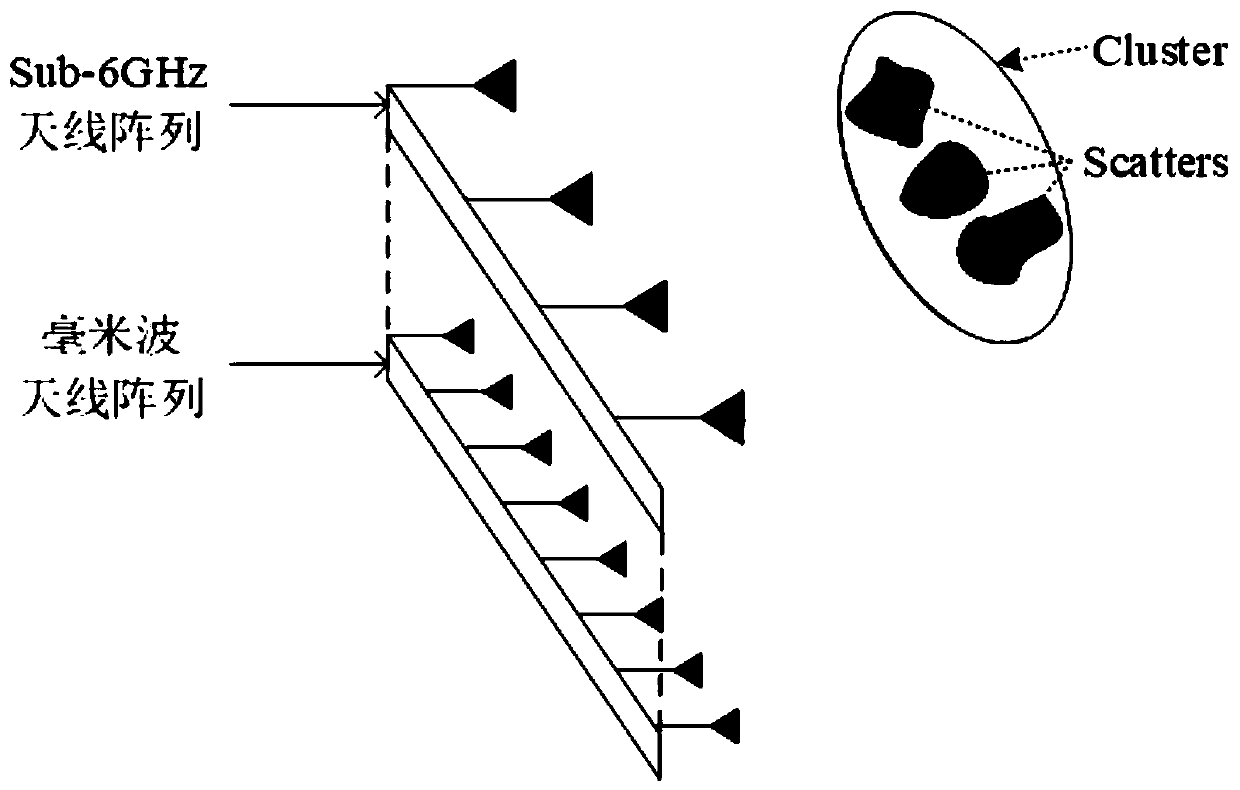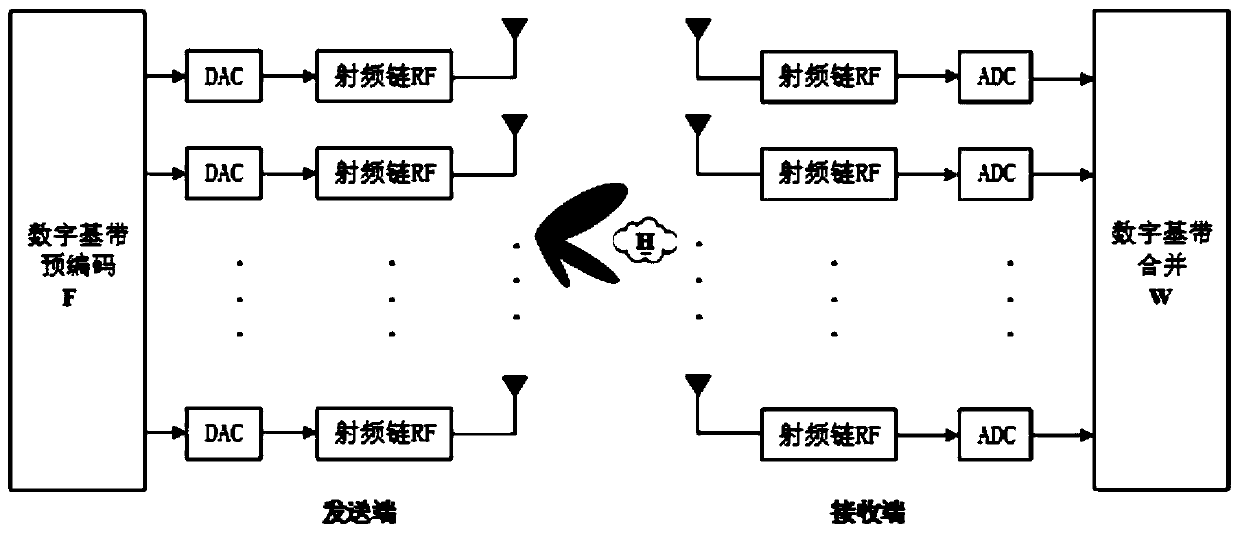Low Frequency Assisted Channel Estimation Method for High and Low Frequency Mixed Networking System
A hybrid networking and auxiliary channel technology, which is applied in channel estimation, transmission system, baseband system, etc., can solve the problems of large overhead, increased system overhead, and inability of users to access, etc., to reduce the normalized mean square error , the effect of reducing the complexity of the algorithm
- Summary
- Abstract
- Description
- Claims
- Application Information
AI Technical Summary
Problems solved by technology
Method used
Image
Examples
Embodiment Construction
[0025] Below in conjunction with accompanying drawing, technical solution of the present invention is described in further detail:
[0026] S1. Establish the Sub-6GHz microwave band channel model and millimeter wave channel model:
[0027] Such as figure 1 As shown, it is assumed that the sub-6GHz system and the mmWave system receiver antenna arrays are aligned with each other in the horizontal direction, and the physical dimensions of the antennas are the same. The use of large antenna arrays for mmWave systems means increased spatial resolution, narrower beams and more concentrated energy. Therefore, a collection of scatterers, which is regarded as a cluster (smaller array size) in Sub-6GHz, may be decomposed into multiple scatterers in the mmWave frequency band.
[0028] Compared with low-frequency transmission, millimeter waves suffer from severe path loss during air propagation, and the diffraction effect in the millimeter wave frequency band is almost negligible, so th...
PUM
 Login to View More
Login to View More Abstract
Description
Claims
Application Information
 Login to View More
Login to View More - R&D
- Intellectual Property
- Life Sciences
- Materials
- Tech Scout
- Unparalleled Data Quality
- Higher Quality Content
- 60% Fewer Hallucinations
Browse by: Latest US Patents, China's latest patents, Technical Efficacy Thesaurus, Application Domain, Technology Topic, Popular Technical Reports.
© 2025 PatSnap. All rights reserved.Legal|Privacy policy|Modern Slavery Act Transparency Statement|Sitemap|About US| Contact US: help@patsnap.com



